Grow Cantaloupe Successfully, even if you think you don’t have a green thumb! Have you ever bitten into a perfectly ripe, juicy cantaloupe and thought, “I wish I could grow these myself?” Well, you absolutely can! For centuries, cantaloupe has been a symbol of summer sweetness, enjoyed by cultures around the world. From ancient Egypt, where they were prized by royalty, to modern-day picnics, this delicious melon has a rich history.
But let’s be honest, growing cantaloupe can seem a little intimidating. Maybe you’ve tried before and ended up with small, bland fruits, or perhaps you’re worried about pests and diseases. That’s where these DIY tricks and hacks come in! I’m going to share my tried-and-true secrets to help you grow cantaloupe successfully in your own backyard, balcony, or even a container garden.
Imagine the satisfaction of harvesting your own sweet, fragrant cantaloupe, knowing you nurtured it from seed to table. No more disappointing store-bought melons! This guide will equip you with the knowledge and simple techniques you need to enjoy a bountiful harvest. Let’s get started and turn your garden into a cantaloupe paradise!
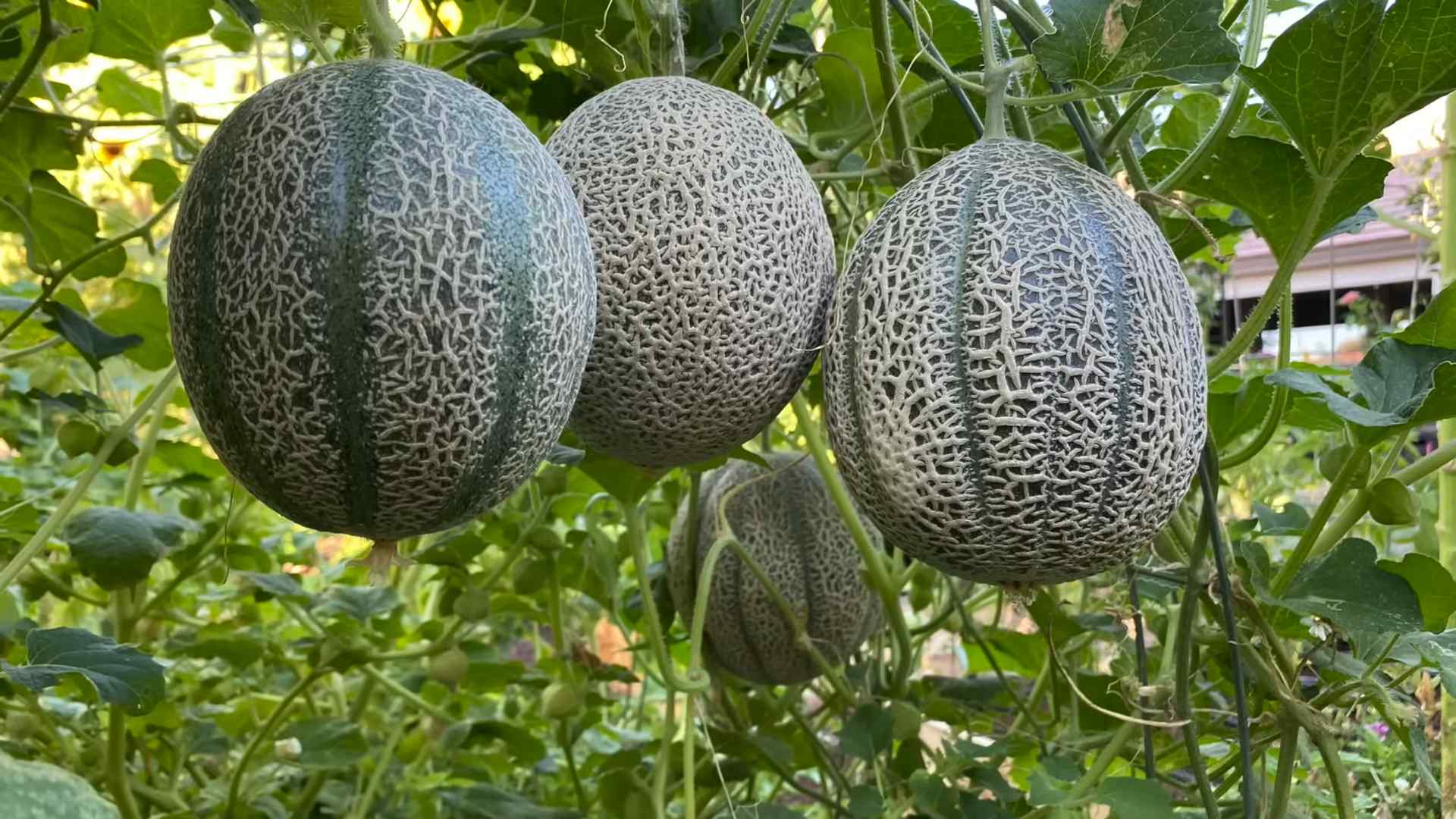
Growing Cantaloupe: A Sweet Success Story (Yours!)
Hey there, fellow gardeners! I’m so excited to share my tried-and-true method for growing delicious, juicy cantaloupe right in your own backyard. Forget those bland, store-bought melons – we’re talking about homegrown sweetness that will blow your mind! This guide is packed with everything you need to know, from seed to harvest. Let’s get started!
Choosing the Right Cantaloupe Variety
Before we even think about planting, let’s talk varieties. Not all cantaloupes are created equal, and choosing the right one for your climate and space is crucial. Here are a few of my favorites:
* ‘Athena’: This is a classic choice, known for its disease resistance and consistent yields. It’s a great all-around option.
* ‘Hales Best Jumbo’: An heirloom variety with a rich, sweet flavor. It’s a bit more susceptible to disease, but the taste is worth it!
* ‘Sugar Cube’: Perfect for smaller gardens, this variety produces smaller, personal-sized melons that are incredibly sweet.
* ‘Minnesota Midget’: Another excellent choice for limited space. It matures quickly and produces small, flavorful melons.
Consider your local climate and the amount of space you have when making your decision. Check with your local nursery for recommendations specific to your area.
Getting Started: Planting Your Cantaloupe
Cantaloupes need a long, warm growing season (typically 80-90 days), so starting them indoors is often the best way to go, especially if you live in a cooler climate.
Starting Seeds Indoors (Optional, but Recommended)
1. Gather Your Supplies: You’ll need seed starting trays or small pots (I prefer biodegradable ones to minimize root disturbance), seed starting mix, cantaloupe seeds, a spray bottle, and a warm, sunny location or grow lights.
2. Prepare the Seed Starting Mix: Moisten the seed starting mix with water until it’s damp but not soggy.
3. Sow the Seeds: Plant 2-3 seeds per cell or pot, about ½ inch deep.
4. Water Gently: Use a spray bottle to gently water the seeds. Avoid overwatering, which can lead to rot.
5. Provide Warmth and Light: Cantaloupe seeds need warmth to germinate. Aim for a soil temperature of 70-80°F (21-27°C). Place the trays in a warm, sunny location or under grow lights. If using grow lights, keep them a few inches above the soil surface and provide 14-16 hours of light per day.
6. Keep the Soil Moist: Check the soil moisture daily and water as needed to keep it consistently damp.
7. Thin Seedlings (If Necessary): Once the seedlings emerge (usually within 7-10 days), thin them to one strong seedling per cell or pot. Snip off the weaker seedlings at the soil line with scissors.
Direct Sowing (If Your Climate Allows)
If you live in a warm climate with a long growing season, you can direct sow cantaloupe seeds directly into the garden.
1. Wait for Warm Weather: Make sure the soil temperature is consistently above 65°F (18°C) before planting.
2. Prepare the Soil: Choose a sunny location with well-drained soil. Amend the soil with compost or well-rotted manure to improve fertility and drainage.
3. Sow the Seeds: Plant the seeds about ½ inch deep and 18-24 inches apart.
4. Water Gently: Water the seeds gently after planting.
5. Keep the Soil Moist: Keep the soil consistently moist until the seedlings emerge.
Transplanting Your Cantaloupe Seedlings
Whether you started your seeds indoors or purchased seedlings from a nursery, transplanting them into the garden requires a little care.
1. Harden Off Seedlings: If you started your seeds indoors, you’ll need to harden them off before transplanting. This process gradually acclimates the seedlings to outdoor conditions. Start by placing the seedlings outdoors in a sheltered location for a few hours each day, gradually increasing the amount of time they spend outdoors over the course of a week.
2. Prepare the Planting Site: Choose a sunny location with well-drained soil. Cantaloupes need at least 6-8 hours of sunlight per day. Amend the soil with compost or well-rotted manure to improve fertility and drainage.
3. Dig the Holes: Dig holes that are slightly larger than the root balls of the seedlings, spacing them 18-24 inches apart.
4. Transplant the Seedlings: Gently remove the seedlings from their containers and place them in the holes. Be careful not to damage the roots. If you used biodegradable pots, you can plant the entire pot directly into the ground.
5. Backfill the Holes: Fill the holes with soil and gently firm the soil around the seedlings.
6. Water Thoroughly: Water the seedlings thoroughly after transplanting.
7. Mulch: Apply a layer of mulch around the plants to help retain moisture, suppress weeds, and regulate soil temperature. I like to use straw or shredded leaves.
Caring for Your Cantaloupe Plants
Once your cantaloupe plants are in the ground, they’ll need regular care to thrive.
1. Watering: Cantaloupes need consistent moisture, especially during fruit development. Water deeply and regularly, especially during dry spells. Avoid overhead watering, which can lead to fungal diseases. Drip irrigation or soaker hoses are ideal.
2. Fertilizing: Cantaloupes are heavy feeders, so they’ll benefit from regular fertilization. Use a balanced fertilizer (e.g., 10-10-10) according to the package directions. You can also side-dress the plants with compost or well-rotted manure.
3. Weeding: Keep the area around the plants free of weeds, which can compete for nutrients and water.
4. Pruning (Optional): Some gardeners prune their cantaloupe plants to encourage fruit production. You can remove some of the side shoots (vines) to direct the plant’s energy towards developing fewer, larger melons. However, pruning is not essential.
5. Pest and Disease Control: Keep an eye out for common cantaloupe pests and diseases, such as aphids, squash bugs, cucumber beetles, and powdery mildew. Use organic pest control methods whenever possible. For powdery mildew, you can try spraying the plants with a solution of baking soda and water.
Supporting Your Cantaloupe Vines
As your cantaloupe vines grow, they’ll need support to keep the melons off the ground. This helps prevent rot and allows for better air circulation.
* Trellising: Trellising is a great option for smaller gardens. You can use a sturdy trellis or fence to support the vines. Tie the vines to the trellis with soft twine or plant clips.
* Mulching: If you don’t want to trellis, you can simply mulch the ground around the plants with straw or other organic material. This will help keep the melons off the soil and prevent rot.
* Cradling: For larger melons, you can use small cradles made of wood or plastic to support them. This will help prevent them from breaking off the vine.
Harvesting Your Cantaloupe
Harvesting cantaloupe at the right time is crucial for getting that perfect sweetness and flavor. Here’s how to tell when your cantaloupes are ready to pick:
1. Check the Color: The skin of the cantaloupe should turn from green to a tan or yellowish color.
2. Smell the Aroma: A ripe cantaloupe will have a sweet, musky aroma.
3. Check the Stem: The stem should easily slip from the vine with a gentle tug. This is known as the “full slip” stage. If you have to force the melon off the vine, it’s not quite ripe.
4. Tap the Melon: A ripe cantaloupe will sound hollow when tapped.
Once you’ve determined that your cantaloupe is ripe, gently twist it off the vine. Enjoy your delicious, homegrown cantaloupe!
Troubleshooting Common Cantaloupe Problems
Even with the best care, you might encounter some problems while growing cantaloupe. Here are a few common issues and how to address them:
* Poor Germination: Make sure the soil temperature is warm enough for germination. Use fresh seeds and avoid overwatering.
* Yellowing Leaves: This could be a sign of nutrient deficiency, overwatering, or disease. Check the soil drainage and fertilize as needed.
* Powdery Mildew: This fungal disease can cause white, powdery spots on the leaves. Improve air circulation and spray with a solution of baking soda and water.
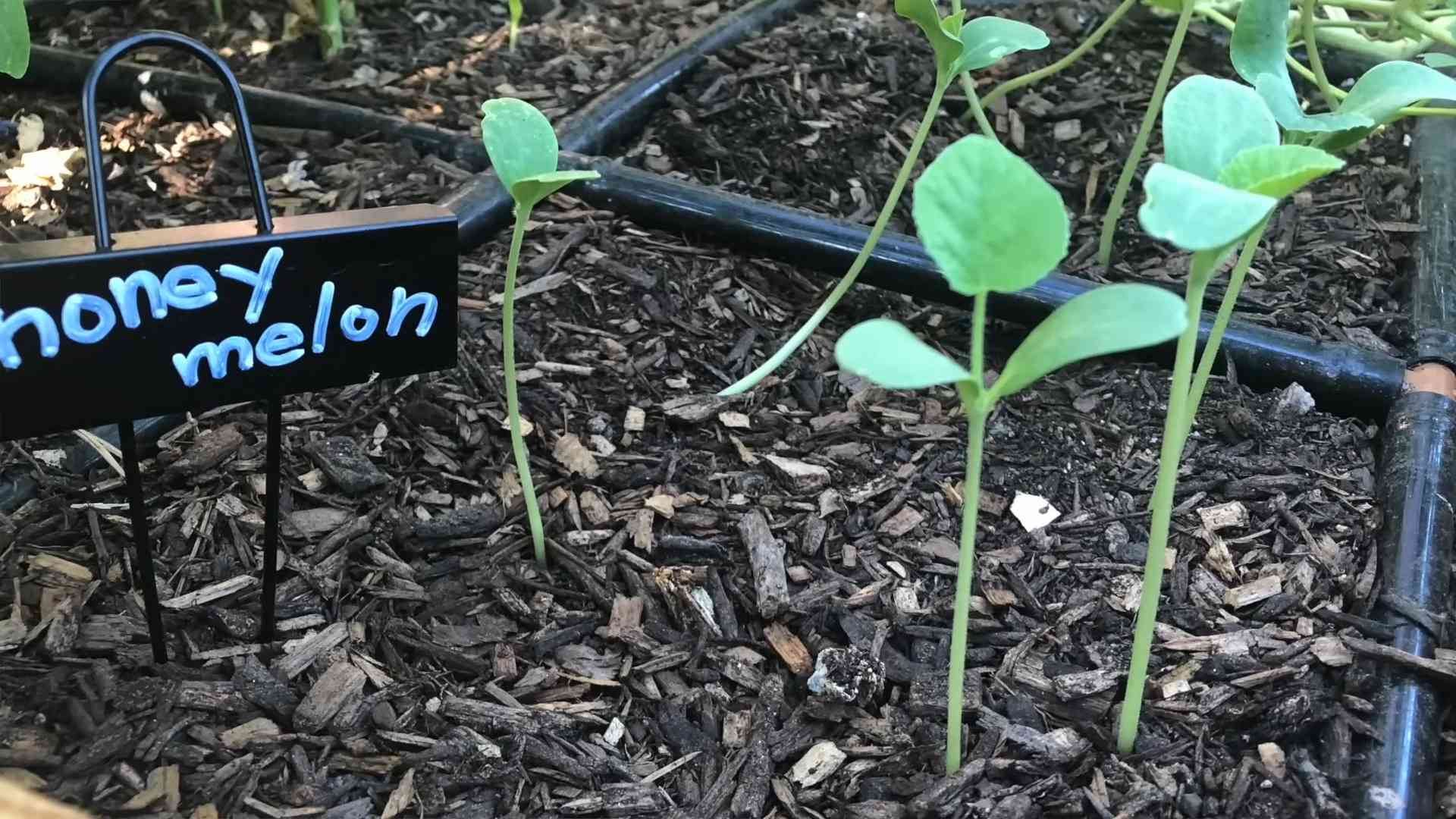
Conclusion
So, there you have it! Mastering the art of growing cantaloupe successfully doesn’t require a green thumb blessed by the gardening gods. It’s about understanding the plant’s needs, providing the right environment, and employing a few clever DIY tricks to give your melons the best possible start. From crafting your own mini-greenhouses from repurposed materials to creating nutrient-rich soil amendments with kitchen scraps, these simple hacks can significantly boost your cantaloupe yield and flavor.
Why is this a must-try? Because store-bought cantaloupe simply can’t compare to the sweet, juicy, sun-ripened flavor of a melon you’ve nurtured from seed to harvest. Plus, you’ll have the satisfaction of knowing exactly what went into your food – no mystery pesticides or long-distance transportation. You’re in control, from seed to slice!
But the benefits extend beyond just taste and control. Growing your own cantaloupe is a fantastic way to connect with nature, reduce your carbon footprint, and even save money. It’s a rewarding hobby that provides fresh, healthy food for you and your family.
Looking for variations? Consider these ideas:
* **Vertical Gardening:** If you’re short on space, train your cantaloupe vines to grow vertically on a trellis or fence. This not only saves space but also improves air circulation, reducing the risk of fungal diseases.
* **Companion Planting:** Plant basil, marigolds, or nasturtiums near your cantaloupe to deter pests and attract beneficial insects. These companion plants can create a healthier and more productive garden ecosystem.
* **Different Varieties:** Experiment with different cantaloupe varieties to find your favorite. Some varieties are sweeter, some are more disease-resistant, and some are better suited to specific climates. Try Athena, Hale’s Best Jumbo, or even a smaller, personal-sized variety like Minnesota Midget.
* **Hydroponic Cantaloupe:** For the adventurous gardener, consider growing cantaloupe hydroponically. This method allows you to control the nutrient solution and growing environment precisely, potentially leading to even higher yields.
Don’t be afraid to experiment and adapt these techniques to your specific growing conditions. Every garden is unique, and what works for one person may not work for another. The key is to observe your plants, learn from your mistakes, and have fun!
We wholeheartedly encourage you to give these DIY tricks a try. Start small, be patient, and don’t get discouraged if you encounter challenges along the way. Gardening is a learning process, and every season brings new opportunities to improve your skills.
And most importantly, we want to hear about your experience! Share your successes, your failures, and any tips or tricks you’ve discovered along the way. Post photos of your cantaloupe plants, tell us about your favorite varieties, and let us know how these DIY methods worked for you. Together, we can create a community of cantaloupe enthusiasts who are passionate about growing their own delicious, healthy food. So, get out there, get your hands dirty, and start growing cantaloupe successfully today!
FAQ
What is the best time to plant cantaloupe seeds?
The ideal time to plant cantaloupe seeds is after the last frost, when the soil temperature has reached at least 65°F (18°C). Cantaloupe thrives in warm weather, so planting too early can stunt their growth or even kill them. In most regions, this means planting in late spring or early summer. You can start seeds indoors 3-4 weeks before the last expected frost to get a head start.
How much sunlight do cantaloupe plants need?
Cantaloupe plants require at least 6-8 hours of direct sunlight per day to produce sweet, juicy melons. Choose a planting location that receives full sun throughout the day. If you live in a particularly hot climate, some afternoon shade may be beneficial to prevent the plants from overheating.
What type of soil is best for growing cantaloupe?
Cantaloupe prefers well-drained, sandy loam soil that is rich in organic matter. The soil should have a pH between 6.0 and 6.8. Before planting, amend the soil with compost, aged manure, or other organic materials to improve drainage and fertility. Avoid heavy clay soils, as they can retain too much moisture and lead to root rot.
How often should I water my cantaloupe plants?
Water cantaloupe plants deeply and regularly, especially during hot, dry weather. Aim to keep the soil consistently moist but not waterlogged. Water at the base of the plants to avoid wetting the foliage, which can increase the risk of fungal diseases. As the melons begin to ripen, reduce watering slightly to concentrate the sugars and improve flavor.
How do I know when my cantaloupe is ripe?
There are several signs that indicate a cantaloupe is ripe. The most reliable indicator is the stem. When the melon is ripe, the stem will begin to crack and separate easily from the vine. Other signs include a change in color from green to tan or yellow, a sweet aroma near the stem end, and a slight softening of the blossom end. You can also gently tap the melon; a ripe cantaloupe will sound hollow.
What are some common pests and diseases that affect cantaloupe plants?
Common pests that can affect cantaloupe plants include aphids, squash bugs, cucumber beetles, and vine borers. Diseases include powdery mildew, downy mildew, fusarium wilt, and anthracnose. To prevent pest and disease problems, practice good garden hygiene, such as removing weeds and debris, and rotate crops regularly. You can also use organic pest control methods, such as insecticidal soap or neem oil, to control pests. For diseases, ensure good air circulation and avoid overhead watering.
Can I grow cantaloupe in containers?
Yes, you can grow cantaloupe in containers, but you’ll need a large container (at least 20 gallons) with good drainage. Choose a dwarf or bush variety of cantaloupe that is better suited to container growing. Use a high-quality potting mix and provide regular watering and fertilization. You may also need to provide support for the vines, such as a trellis or stake.
How do I fertilize my cantaloupe plants?
Fertilize cantaloupe plants regularly throughout the growing season. Use a balanced fertilizer (e.g., 10-10-10) at planting time, and then side-dress with a nitrogen-rich fertilizer (e.g., ammonium nitrate) when the vines begin to run. Once the melons start to develop, switch to a fertilizer that is higher in phosphorus and potassium to promote fruit development and sweetness. Follow the instructions on the fertilizer package for application rates.
How can I improve the sweetness of my cantaloupe?
Several factors can influence the sweetness of cantaloupe. Ensure that the plants receive plenty of sunlight, water, and nutrients. Avoid overwatering as the melons ripen, as this can dilute the sugars. You can also try pinching off some of the smaller melons to allow the plant to focus its energy on developing the remaining fruits. Some gardeners also recommend adding Epsom salts to the soil to improve sweetness.
What are some good companion plants for cantaloupe?
Good companion plants for cantaloupe include basil, marigolds, nasturtiums, oregano, and thyme. These plants can help to deter pests, attract beneficial insects, and improve the overall health of the garden. Avoid planting cantaloupe near potatoes, as they can compete for nutrients.


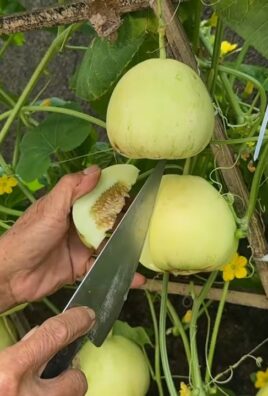
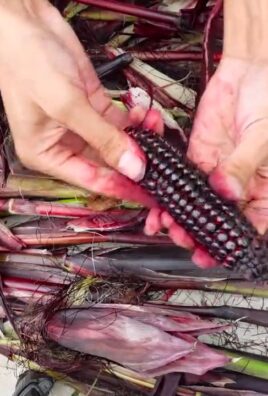
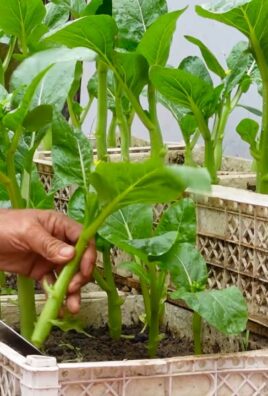
Leave a Comment